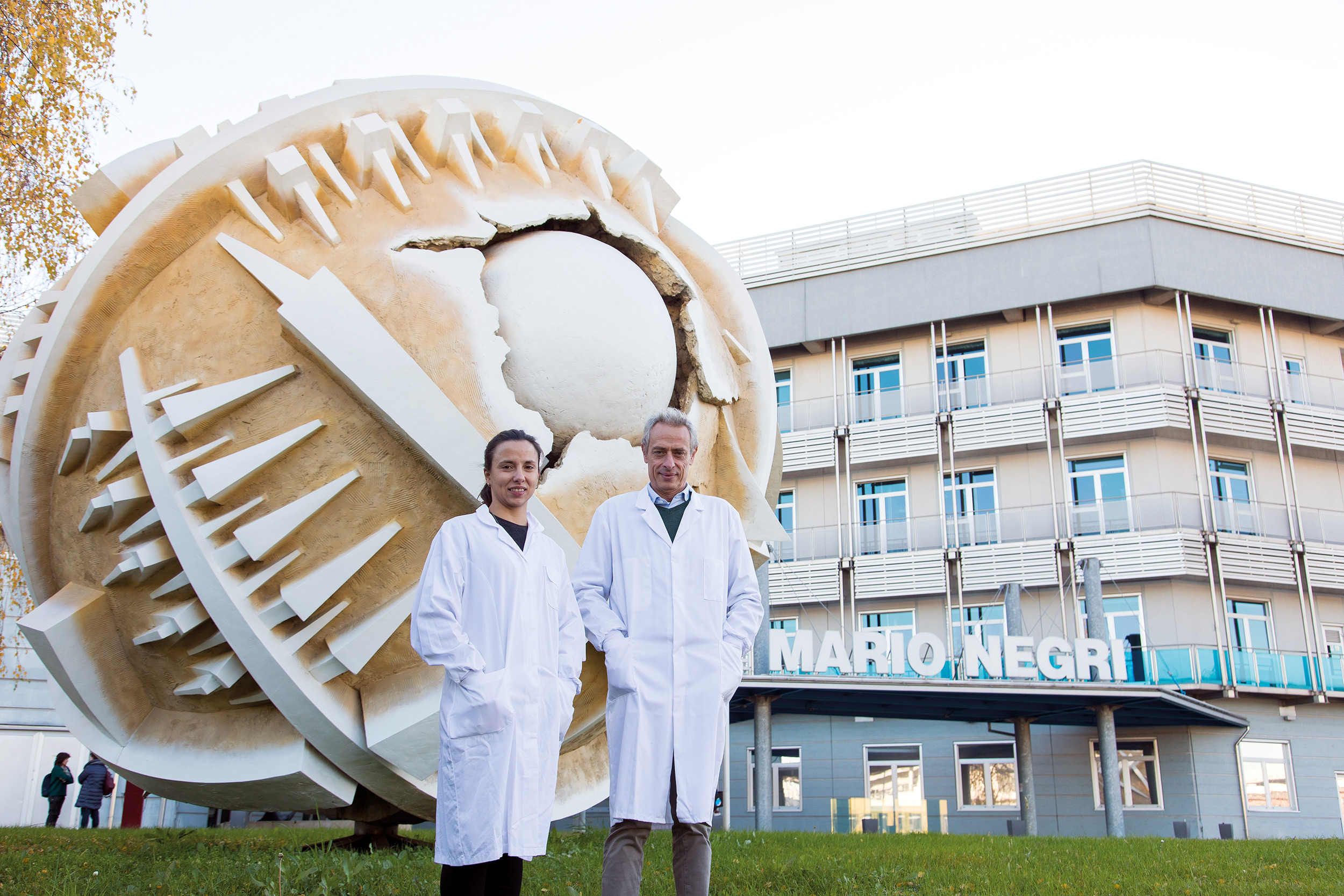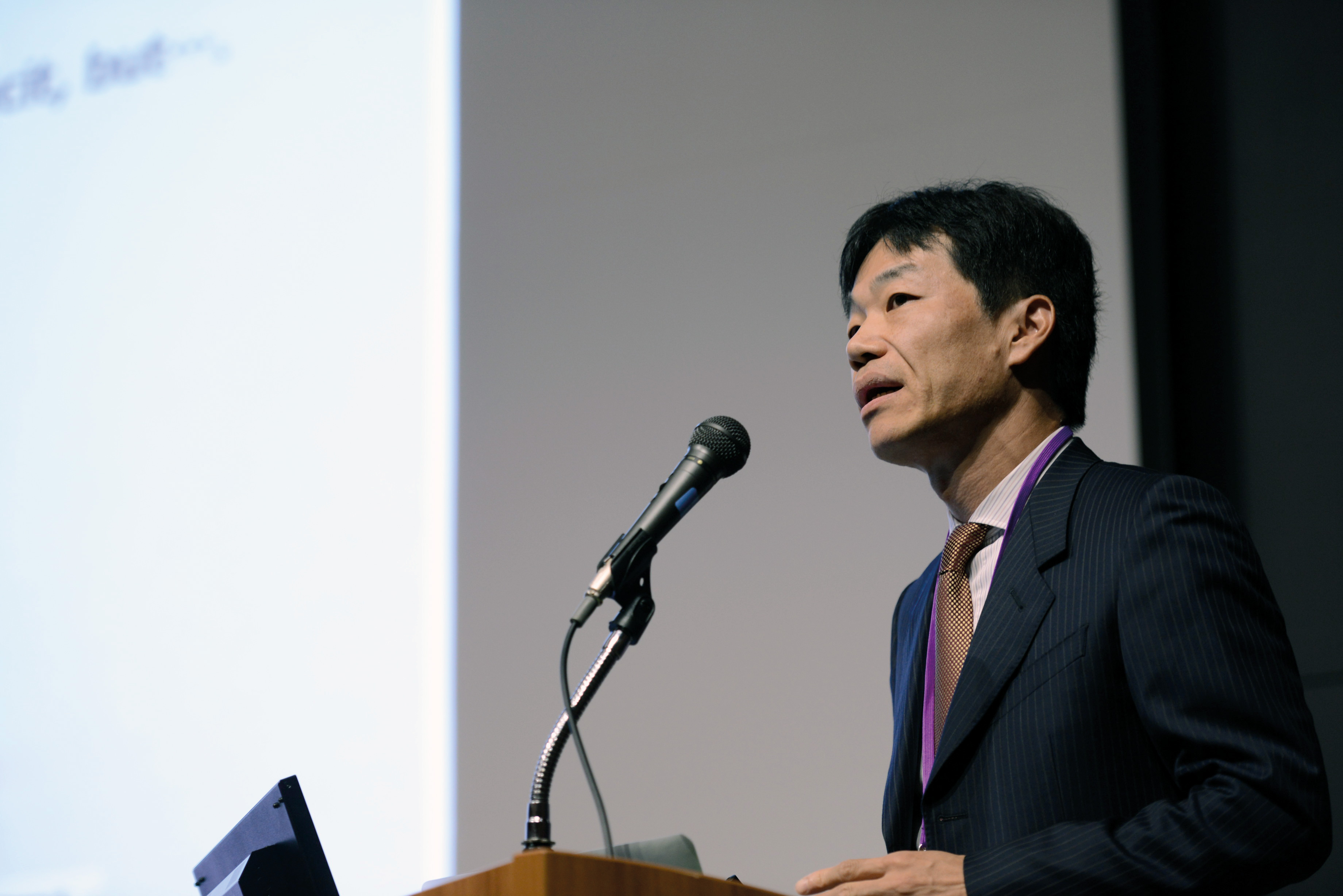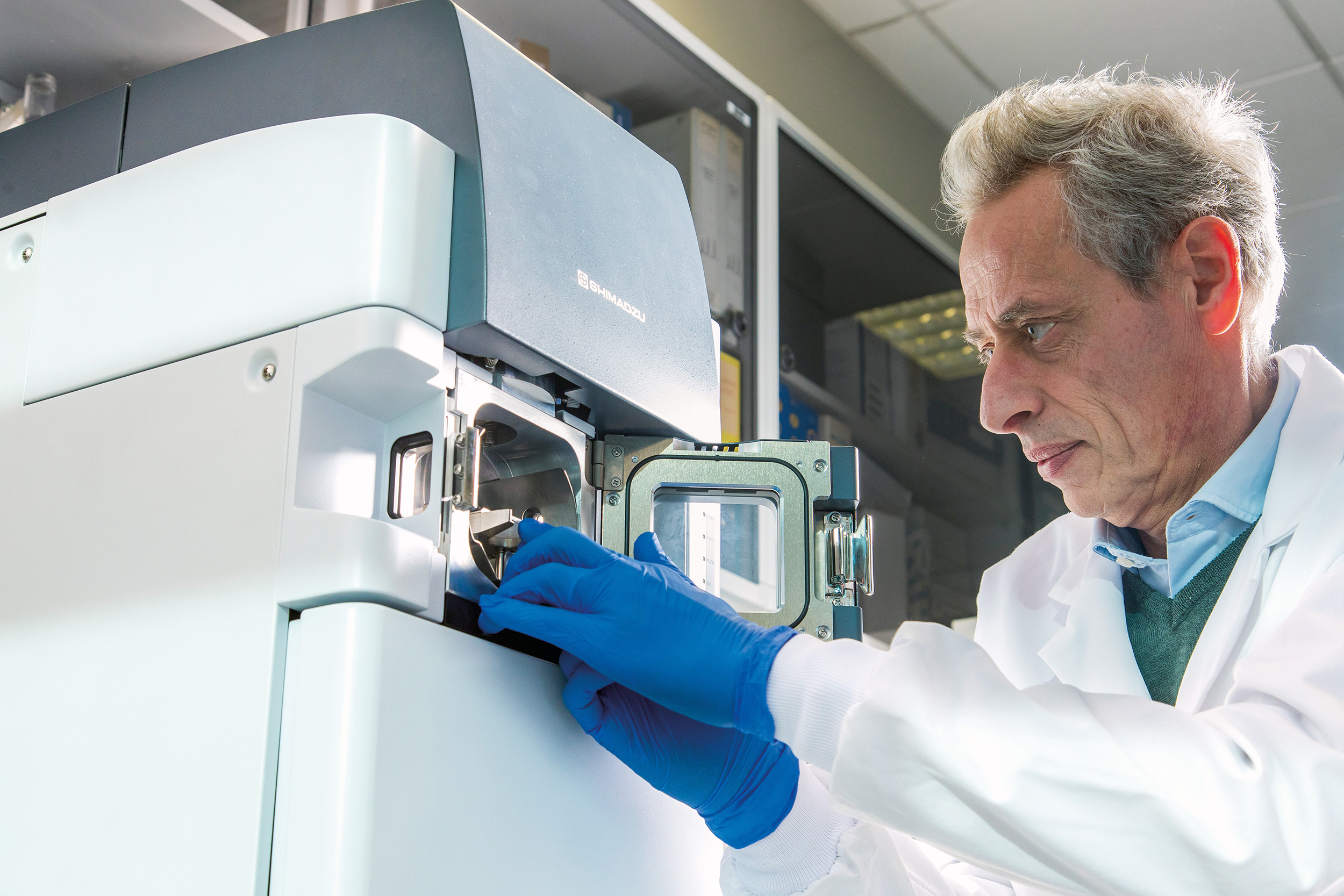Global solution through global collaboration
Cancer diagnosis: Shimadzu innovation centers as a partner of scientific research
Beginning with one man in Kyoto, Japan, in 1875, the Shimadzu Corporation now has more than 10,000 employees worldwide working under the company’s philosophy, “contributing to society through science and technology.” For its next generation of scientific excellence, Shimadzu has established Shimadzu Innovation Centers (SICs) across the globe, with the European Innovation Center (EUIC) opening in 2017 in Duisburg, Germany.
Based on the growing network Shimadzu has nurtured since its arrival in Europe in 1968, the EUIC has worked on over a dozen ongoing projects that aim to change how societies preserve food, practice medicine, and protect the environment. Here we introduce a project between EUIC and an academic institution that will advance cancer treatment.
Research to improve cancer detection
There is no doubt who proposed to collaborate on the cancer project between Shimadzu and Dr. Enrico Davoli at the Mario Negri Institute for Pharmacological Research in Milan, Italy, and the first president of the Italian Mass Spectrometry Society. After its successful collaboration with Professor Sen Takeda of Yamanashi University, Japan, to study a new system that combines artificial intelligence (AI) with probe electrospray ionization mass spectrometry (PESI-MS) to enhance research-based detection of cancer cells of the liver (Yoshimura et al., 2012), Shimadzu proposed to do the same with Davoli in Europe.
Hepatocellular carcinomas are a leading cause of cancer death. Common treatment involves resecting the cancer cells, but there is argument in the field on just how much healthy tissue taken in the resection is best for patient survival, with some re-searchers arguing a small buffer zone that removes healthy tissue is acceptable and others arguing nothing but cancerous tissue should be removed. During the operation, the surgeon will pass a specimen to a pathologist who will perform histology to determine whether more resection is needed. Each specimen takes about 30 minutes to prepare and analyze, which not only cause higher costs, but also the likelihood of infection.
New science for our partners
Japan ranks near the top of patient outcomes for liver cancer, in large part because of Japan’s innovative diagnostic technologies (Kudo, 2018). In the project between Davoli and Shimadzu, AI is trained to analyze a specimen from PESI-MS data without any histology or other laborious preparation. AI will output a binary decision – normal or cancer – with a statistical probability. The whole process takes no more than two minutes from the time the surgeon acquires the specimen to the AI decision.
 Silvia Giordano and Enrico Davoli in front of the Mario Negri Institute, Milan
Silvia Giordano and Enrico Davoli in front of the Mario Negri Institute, Milan
After Takeda and Shimadzu had shown the effectiveness of this approach in Japan, the question lingering was whether it could extrapolate to other countries, since the AI was originally trained with data from Japanese specimens. That was when Shimadzu contacted Davoli, asking if he could acquire tissue samples from Italian hospitals. Davoli was very excited to take part.
 Prof. Sen Takeda of University of Yamanashi at Shimadzu Global Innovation Summit 2017
Prof. Sen Takeda of University of Yamanashi at Shimadzu Global Innovation Summit 2017
“For a researcher, having a prototype and the first to try something is a desire your whole life. The instrument is brand new. The approach is brand new. It was a very good opportunity,” he said.
The early results are promising, and Davoli is extending his collection to samples for other solid tumors with funding from Shimadzu. “Our plan is to work with other European nations to test PESI-MS on other populations,” he says, adding that EUIC has been instrumental at building the continental research network.
Working like an academic partner
In this way, SICs can be viewed as a hybrid of industry and academia. All SICs aim to create new commercial markets, but explains Dr. Ann-Christin Niehoff, EUIC Product Manager of Imaging, markets do not only grow from economic need, but also training expertise.
“More than 90 % of Ph.D. chemists do not stay in academia. We help build their career,” she says, which is why Shimadzu funds Ph.D. students and will even be co-investigators on grants. Examples include collaborative projects at Limoges Hospital, France, and the University College London, England, where EUIC is supporting Ph.D. grants for three years.
Shimadzu believes that no matter the excellence of its instruments, the primary goal of its SICs is to benefit society. SICs therefore view their research collaborations as academic partnerships that never compromise academic independence, encouraging research publications and supporting academic education.
The success of SICs is built on new ideas, which is why our teams are always in consultation with university researchers to learn about scientific problems that Shimadzu innovation can help solve. It is also why SICs build research networks, having introduced Davoli to Takeda. Takeda was invited to speak at our hosting event, Global Innovation Summit 2017 in Kyoto, where he got to meet our other partners in academia as well and share their latest findings in analytical research.
By “contributing to society through science and technology”, Shimadzu and its SICs want to translate academic research into scientific solutions for some of the world’s greatest challenges.
The information including affiliates and titles of the persons in this article are current as of the time of interviewing (December 2018).
All the instruments in this article are research-use only (RUO) instruments and not for use in diagnostic procedures. Shimadzu is an analytical equipment provider and in certain regions, including the USA, Shimadzu products may be regulated as for research purposes only. If you have questions on approved use of a Shimadzu device, please contact your regional office.
References
Kudo, M. (2018). Management of Hepatocellular Carcinoma in Japan as a World-Leading Model. Liver Cancer 7, 134-147.
Yoshimura, K., Chen, L.C., Mandal, M.K., Nakazawa, T., Yu, Z., Uchiyama, T., Hori, H., Tanabe, K., Kubota, T., Fujii, H., et al. (2012). Analysis of renal cell carcinoma as a first step for developing mass spectrometry-based diagnostics. J Am Soc Mass Spectrom 23, 1741-1749.
More information at www.shimadzu.eu/european-innovation-center
